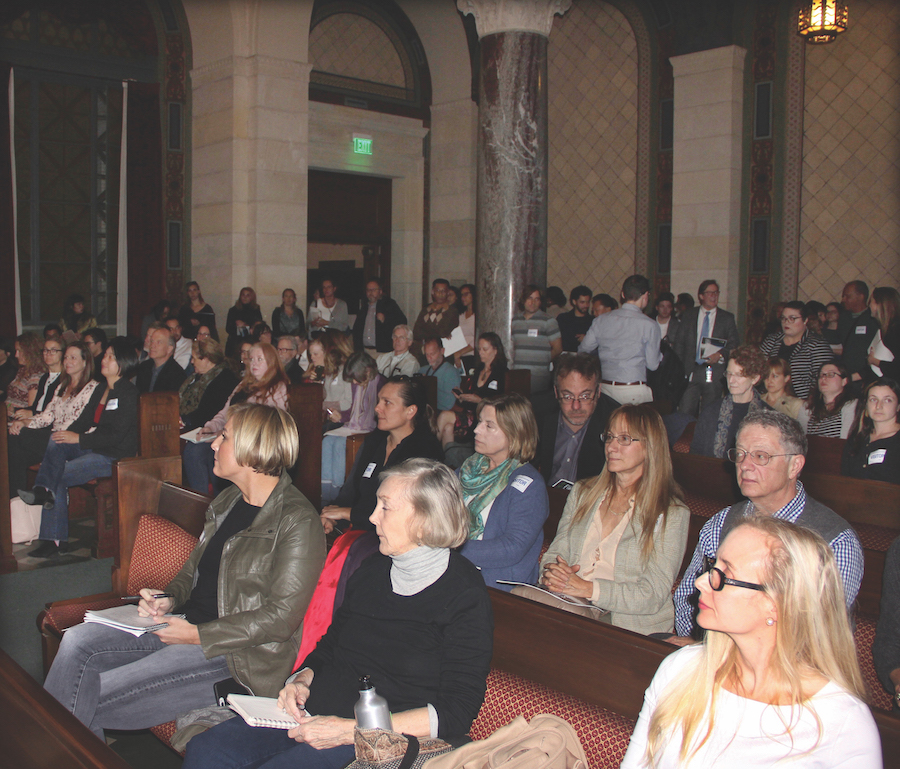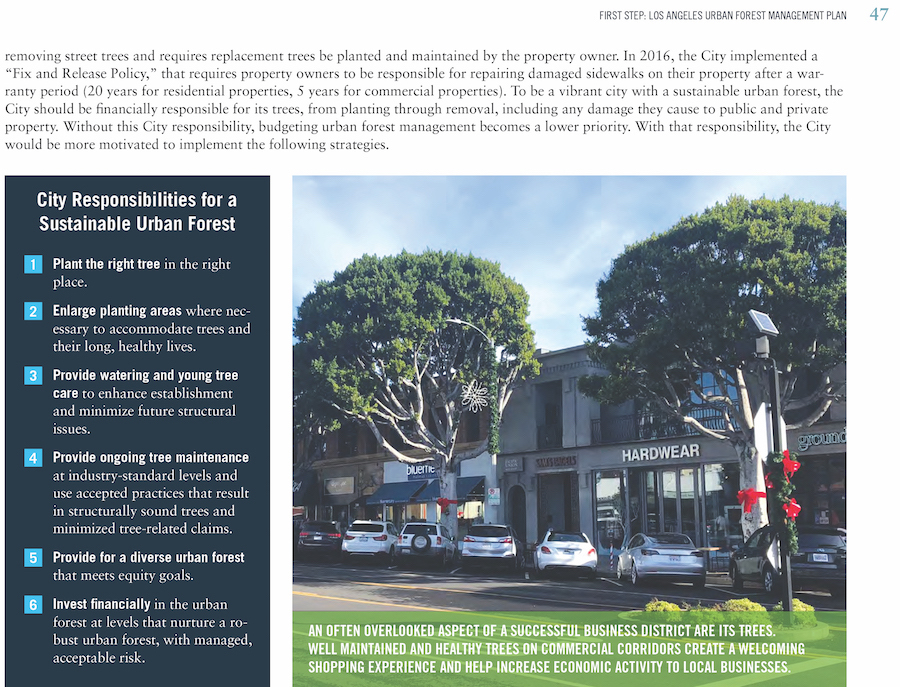Report finds urban forest not valued by policymakers

Hundreds of concerned residents and city staff members attended a presentation last month at City Hall to learn the first steps toward developing a citywide approach to improved urban forestry.
Environmental consulting firm Dudek presented its findings and recommendations at the Dec. 4 event following a yearlong investigation into the City of Los Angeles’ programs, funding and policies related to its urban forest.
Within the “First Step” report, Dudek alleges a lack of “consistent urban forestry leadership, vision, funding, and planning” at the city level. Previous campaigns to do something about the problem, like the adoption of the City’s Urban Forestry Policy in 1993, failed to deliver results, according to the report.
“These failures have led to disparate tree canopy cover between affluent and disadvantaged communities; trees as an afterthought as the city develops; and an urban forest vulnerable to catastrophic losses in the face of climate change, pests, drought and disease,” reads the report.
The Dudek “First Step” report was commissioned by City Plants, a nonprofit entity overseeing a public-private partnership between the city and six other organizations.
Quite a few local residents were among the crowd at City Hall to hear the findings, including the Greater Wilshire Neighborhood Council (GWNC) Sustainability Committee Chair Julie Stromberg.
“I was eager to hear the report’s recommendations,” said Stromberg. “Because we already know that the City has not been prioritizing the urban forest.”
Others from the neighborhood included Jeffry Carpenter, GWNC board; Helen Hartung, Windsor Square Association Canopy Committee chair; Mary Proteau, GWNC Sustainability Committee member; and Katie Bennett, who grew up in Hancock Park and Windsor Square and is an executive at Brightview Landscape.
Stromberg says that this report rightly indicates that the urban forest in Los Angeles is in a state of crisis.
“This report reveals a misunderstanding or lack of knowledge and appreciation for our urban trees. Not just the aesthetic values, but also the health benefits, which alone have incredible value.”

Trees offer many benefits, some of which are directly identifiable and quantifiable, and others that are experienced. Among the benefits identified by Dudek, urban trees offer city residents cleaner air, a reduced urban heat island effect, captured rainwater, cleaner water, and saved energy. “By reducing energy demand and absorbing carbon dioxide, trees and vegetation decrease the production and negative effects of air pollution and greenhouse gas emissions,” claims Dudek.
Stromberg says that members of the Sustainability Committee will continue to analyze the 106-page Dudek report.
The GWNC Sustainability Committee will discuss the report findings and recommendations at its next meeting, Tues., Feb. 12.
Category: News


